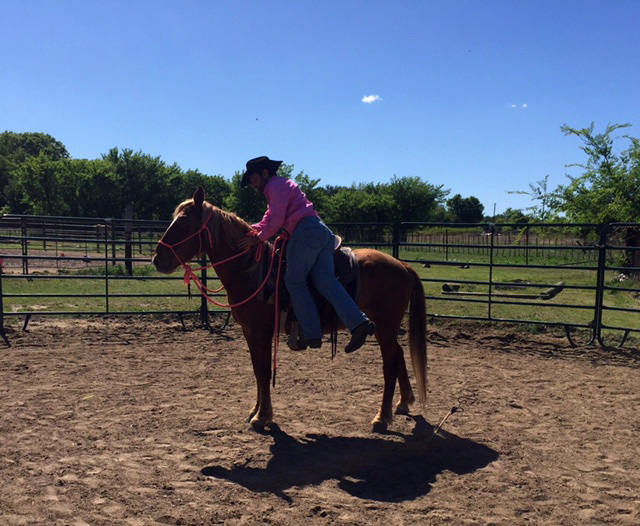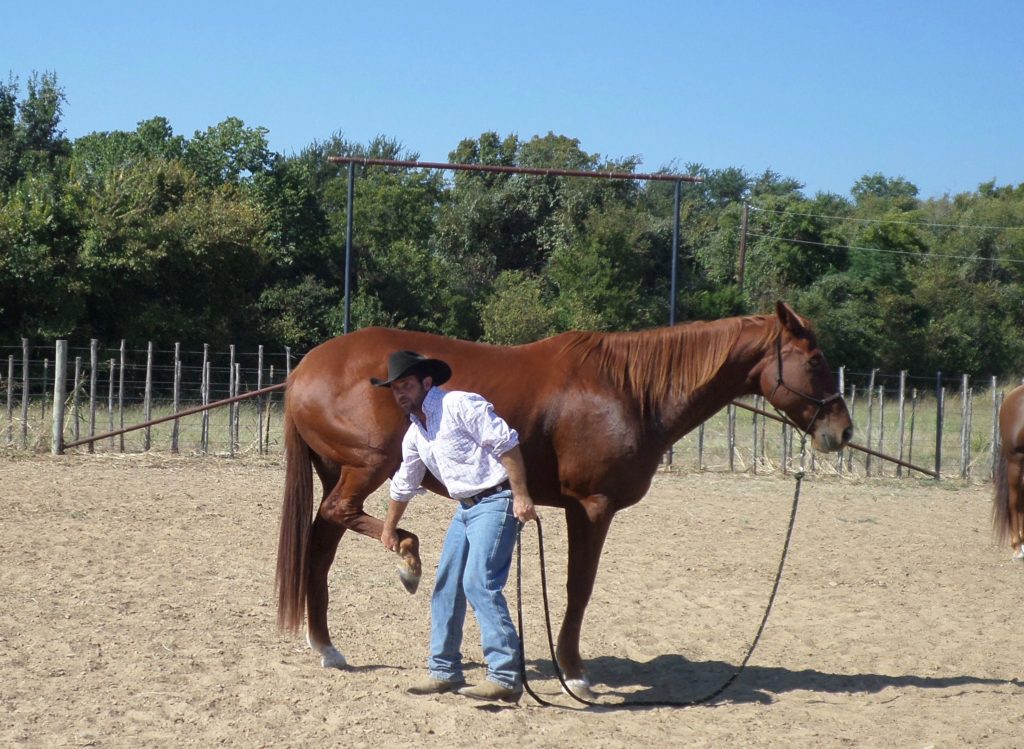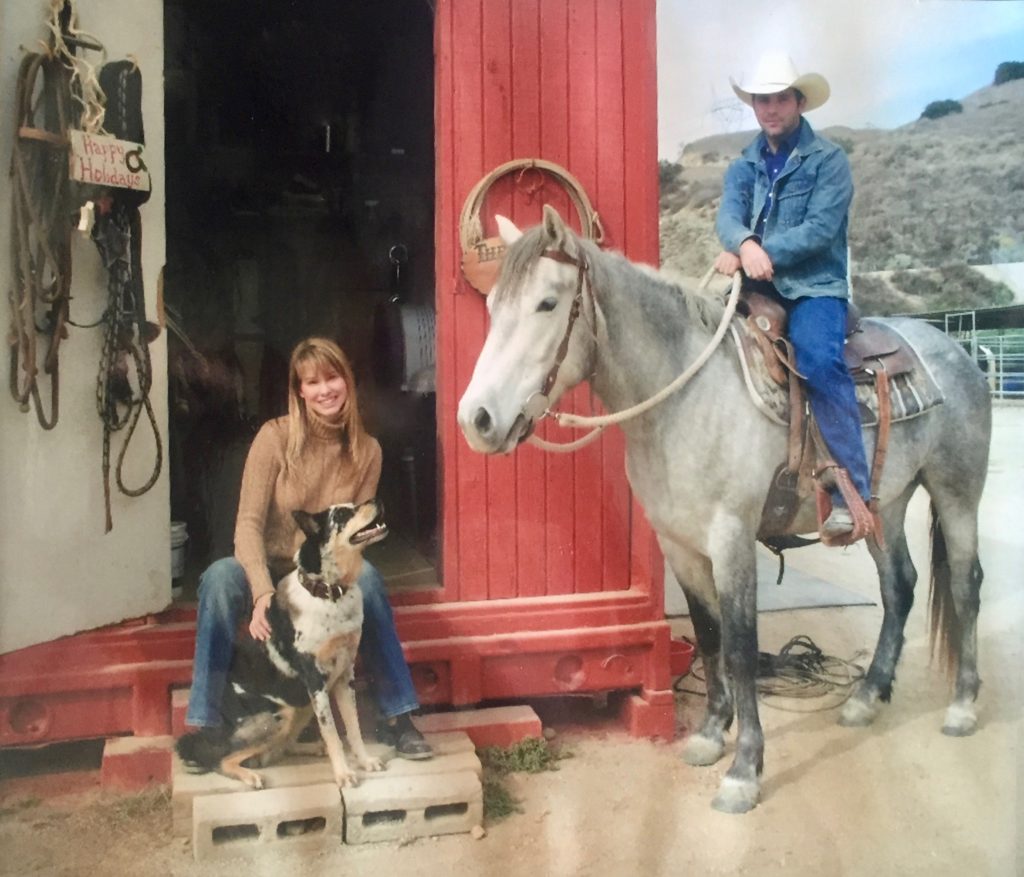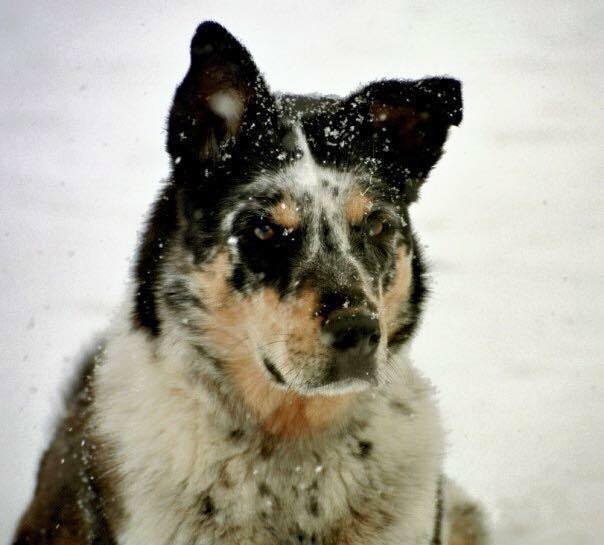The Natural Horseman
This is why we do what we do — RayeAnn and Cisco

By Steve Stevens
RayeAnn brought her horse to us about a year ago and told us it was his last chance. Now we have heard this before from multiple other people about their horses. No pressure right?
But I knew RayeAnn was sincere about this and at the same time I could see her concerns about her horse, “Cisco.” She had put a lot of time and money into him already. He was stout and pretty, but you could see the white in his eyes and his distress just being turned loose in our round pen. He came with baggage, many different bad experiences, didn’t care much for being saddled, had random explosions and bolts. RayeAnn had been trying to ride him after the last trainer, but after a recent ride where, (if I remember correctly) while trying to change directions he spooked and bolted. RayeAnn is an excellent rider so she survived but she had had enough.
We listened to RayeAnn describe the past experiences she knew that Cisco had and asked lots of questions.
Then started at square one.
No matter if we get a colt, a horse that bucks, or a kid’s horse that doesn’t like to stand still, we start back at the beginning and try to put a solid foundation on them.
Cisco was tight and very nervous of everything during the ground work sessions.
I will go to my grave with this thought- if a horse is nervous or can’t deal with ground work they will not be easy to deal with riding. I slowly and consistently worked with Cisco doing basic lunging and desensitizing. He would make changes, but they weren’t big and it didn’t take much for him to revert.
I was and am always honest with the client when the horse is struggling and I told RayeAnn about his difficulties on the ground. Now, I know because we have done this so many times with other clients…when a client brings you a horse with riding issues they in general don’t want you to tell them about the issues you are having on the ground with the horse. But RayeAnn took it in stride and just told me to do what I needed to do.
I got to the point after a few weeks where I felt like Cisco was ready to start being saddled again. For a horse that had some rides under him, he was completely frightened about being saddled. This also transferred to him just carrying the saddle during ground work. It didn’t take much for him to blow up or grab his butt. I spent the next few weeks getting him as comfortable as I could with being saddled. I must have taken that saddle on and off a thousand times.
We had many sessions where I would saddle him and he would stand quiet, and I would just reward him by yanking the saddle off and putting him up for the day.
The biggest issue Cisco had was when he changed eyes. Meaning that things would go from him having vision of something in the left eye and when he saw the same thing out of the right eye it truly scared him. So we made it part of his training to always start with multiple changing eye directions. Once he started getting better with this, I started riding.
He was living in a stress zone at all times when you were on his back.
This became a delicate process. He wasn’t one of those horses you could lope the issue away by getting him tired. The harder you worked him the more panicked he would become, so I had to be subtle and easy. What I did was really search to reward him for any time he tried by relaxing, taking a deep breath, licking his lips. I would just shower him with affection when he would relax, once again sometimes just getting off of him, taking the saddle off and calling it a day.
Slowly but surely he started relaxing more and more and allowed me to ask more of him. It took nearly three months but I could finally saddle him easily and ride him off with little resistance. Cisco was a frightened horse that needed a lot of reassurance and confidence that he wasn’t going to be put in a situation he couldn’t deal with.
The second part of the story
RayeAnn had decided to have faith in me in my process even though it was taking more time and money then I am sure she would have preferred.
With many horses that come to us for training, we are trying to rehabilitate the horse and that certainly can be a process.
RayeAnn gave me that opportunity with Cisco.
But here is the amazing part of the story. I got Cisco where RayeAnn could go on with him, but if she just turned him out for months and pulled him out one day expecting him to be great, it would be a recipe for disaster. Especially with Cisco. But that is not what she did.
She dedicated herself to this horse. She has worked with him nearly every day since he left us, starting slowly with a game plan we gave her and building out. Cisco, even as far as we got him, wouldn’t be an easy deal. He would and could be frustrating, but RayeAnn’s sure will and determination would overcome to build a relationship with him.
A few weeks ago, we were doing a group obstacle lesson and RayeAnn and Cisco came out and joined us. Out of ten horses, Cisco was the most relaxed of the group. He looked liked a 20-year-old broke kid’s horse. I always like to say our job as trainers is to show the owner their horse’s potential and it is up to the owner to take the horse to the next level.
Well, RayeAnn did that with her boy Cisco and then some. I know she still has a ways to go, but RayeAnn is one of the true heroes of the horse industry, not giving up on a horse that with many others would have gone to the killers. She invested money, time and her heart.
I am truly inspired by her, and she is one of the reasons that I continue this dream of helping people with their horses.
Thank you RayeAnn.
HOME
The Natural Horseman – Miracle the Mustang
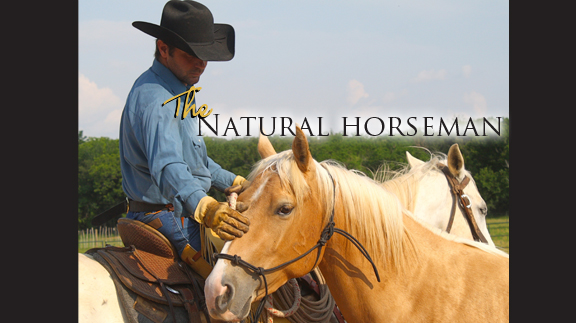
By Steve Stevens
So after a five year hiatus from Mustang competitions, we have decided to do another one.
We are planning on competing in Lexington, Kentucky, at the Extreme Mustang Makeover in early July.
I am currently on the 22nd session with our draw. We named this little draft cross with a flaxen mane “Miracle.” He gained his name due to the fact that we got the wrong mustang. He was not the one we drew for the competition. There was some sort of mix up that wasn’t figured out until he was half way home to Texas from Illinois. We also named him Miracle because of our long and hard but blessed journey we have traveled on since the last time we competed in a mustang competition.
The cool thing with working with untouched mustangs is that the trainer is fully responsible for how the mustang is, how he will become. Meaning that everything he does is because of me or his own mental and physical ability. I can’t blame the last owner or trainer.
There are no excuses.
It is a great honor and responsibility to be the first one to touch, handle and ride a wild mustang. They have very in- depth sensorial survival skills. They are also more toughened from their prior environment, so that human-horse connection can be a difficult barrier to break.
But if you can connect with them, the rewards can be extraordinary, and the bond can be tremendous.
To start, Miracle has been a little spooky, which is to be expected. But in the grand scheme of things he is really smart and has been trying hard. We spent the first three weeks just doing groundwork: teaching him to be caught, basic lunging, desensitizing, picking up feet, leading, saddling and driving. He has had six rides on him.
He seems to be learning something new every day. We will just have to wait and see how far he can go. Right now the main goal is getting him as trained as possible.
We are working on him just being able to walk, trot and canter in the bridle, and then we will go from there. I am always doing my best to put him first and not allowing the competition to rush the process.
I truly believe that working on becoming the best trainer I can be means that I have to keep educating myself, to never stop learning. Working with mustangs can certainly widen your education and keep you humble.
We will keep updating you guys on my journey with Miracle.
HOME
The Natural Horseman – Horses that have trouble being trimmed

By Steve Stevens
So often we get horses in training or have someone ask us what to do about their horses that throw fits with their farrier. The horses won’t stand still, pull back, won’t pick up their feet or even can strike and kick. Their farrier is always upset, doesn’t want to work on their horse or even worse, because the horse is giving them a rough time, the farrier takes his frustration out on the horse.
There are a few factors here that need to be dealt with.
The first is for the owner to understand that for a lot of horses, having their feet worked on can be very stressful and overwhelming. Most farriers don’t have the time and/or patience to go slow and help train your horse. The only way they can make a living is to hurry up and move on as soon as possible to get to the next horse. So it now becomes OUR responsibility to prepare our horse. If your horse won’t stand still for you to pick up all four feet, and clean their hooves out with a hoof pick, they probably aren’t ready for the farrier who will be in a rush, will have multiple clanging tools and will be asking your horse to get into fixed positions.
We must be consistent with picking up our horse’s feet and letting them get comfortable with that. If your horse is giving you a rough time or you are scared to pick up their feet, you must find a professional to help.
With all the problem horses I have worked with, one of the most important philosophies we have learned and practiced is a very simple concept:
IF YOUR HORSE WON’T STAND STILL FOR YOU TO PICK UP HIS FEET, GROOM HIM OR SADDLE HIM NOT BEING TIED, THEN HE IS NOT READY TO BE TIED UP.
See, when a horse is tied hard, we take away their ability to move their feet.
So if they get scared, they are trapped and most often will fight, pull back, fall down, kick and get worse at the task at hand. How many times have you tied up your horse hard and he got scared and fought it, got through it for the time being, but then when you come back another day he has the same issues?
We need to understand how horses process their thoughts. A horse feels safer when he has the ability to move his feet. It’s easier for him to work through things. Once we take that ability away, he will most always fight if he gets scared or bothered. So before we ever tie him up, we must learn how to do these tasks with him untied.
I know this goes against all the old school techniques. But trust me…we get the horses in training after the old school techniques don’t work…after horses have pulled back, broke multiple halters, split their heads open, nearly killed the farrier and/or yourself.
The second factor is that owners need to have the courage to stand up to their farrier if they see things are getting out of control. If a horse is getting more scared, and the farrier is getting more upset, it is ok to say, “That can be enough for today, let me work with him a little bit more before he or she gets anyone hurt.” So what if your horse’s feet get a little long and you have to pay a bill? It is better than the alternative of being scared to death every time he gets trimmed.
If you have a farrier worth his salt, he will be appreciative that you don’t want him to get killed today trimming your horse. If he tells you otherwise, it’s probably time to find another farrier. I can’t tell you how many times clients have brought me horses that have foot issues, can’t be tied or go running to the other side of the pen when the farrier comes. The client often tells me something like, “I knew it was getting worse every time my horse got trimmed, but I just felt bad to stop using my farrier. He is a really nice guy.” We must find the strength to do what is right for the horse and if you have to go through five farriers to do so, that is fine.
I probably sound like I am bashing farriers right now, but actually I have more respect for a farrier’s profession than anyone. It is not easy to have to get under crazy horses all day long in the elements. I have been blessed to know a handful of amazing farriers who are always on time, patient, knowledgeable and understanding. They know that if they are going to work on your horse for the next twenty years, that if they take their time the first couple of times, it should be easy for the next two decades.
The third factor is to do the training with a horse that is having a hard time. If a horse nips, or kicks, leans or won’t stand still, we must try our best to correct the issue.
The easiest way to do this is to move their feet, to make them work, hustle them by lunging, doing rollbacks, driving their hindquarters around.
I will give you an example. If I were holding a horse for the farrier and she kicked or tried to bite him, I immediately would start lunging that horse, making it work. That is how we can make the wrong thing difficult. So make sure your horse can lunge well, change directions and back up well on a lunge line.
THE NEXT TIME YOUR HORSE GIVES YOU OR THE FARRIER A TOUGH TIME, PUT IT TO WORK.
The more aggressive the behavior, the longer I will hustle them. The toughest part about this exercise is having the wind to really put some effort behind this and hang in there long enough that they get the point. Once you are done, bring them back to where you started and go back to work like nothing ever happened. This may take two to three times to really take effect, depending on your ability and expertise.
Just remember, if things are going bad when getting your horse’s feet done, it will only get worse if you don’t work on fixing the problem.
Have faith that there are amazing farriers out there and take the time to find them.
HOME
The Natural Horseman – A Family’s Best Friend

By Steve Stevens
We laid to rest a truly beautiful spirit a couple of weeks ago, our twelve-year-old rescue dog, a mix of Australian Shepherd and Husky, “Scarlett.”
As I have spent some time reflecting on our loss, I know the saying goes a “Man’s best Friend,” but Scarlett was more than that. She was the “Family’s Best Friend.”
My wife and I came upon Scarlett during a time very early in our relationship. She was maybe our first choice of relationship responsibility. I had come across her during a random stop at a local shelter. Although she was a puppy, she seemed to have an old soul and appreciation for life. She didn’t seem phased by the road she had not chosen.
Scarlett looked directly into my eyes with a unique sparkle, and I knew we had to have her. I called Amanda and told her she just had to see her. The moment they met it was no longer a choice but a need to have this little big eared black, grey and white puppy in our life. We had to buy her in a bidding option and there was one other lady making her attempt to out bid us. Amanda grabbed my arm tight and twisted hard, and gave me a look I have come to know as “don’t mess this up.” We paid way more than we had expected on a rescue, but her value would soon become unparalleled.
Looking back, there was only one being with Amanda and me from the beginning of our relationship and that has been Scarlett. Scarlett was named after Scarlett O’Hara from “Gone with the Wind.”
Much like the character, Scarlett became the strength of our family, the one that held us together. She was beautiful, tough, a little spoiled.
Our Scarlett was very kind, kind to all comers.
I started thinking how Scarlett had been there on all of our youthful adventures as we loved to travel the American West. We dragged her all over the place, to the mountains, to the desert searching for wild Mustangs, back and forth to Scottsdale, Arizona, to visit Amanda’s parents and family, to Gallup, New Mexico, to see my dear friend Sonny. She loved to play in the snow; there she was probably at her happiest. She also loved meeting new people. Sometimes people could be intimidated by her because of her size and bark, but she never hurt a soul.
She was with us when we left California to move to our first home in Texas to live our new adventure on a ranch. She chased wild turkey and ran with the horses there. She was there when we brought our newborn son home then when we brought our new daughter home. She protected them and I always felt safe when I was not there. I knew she would watch over. She cuddled up tight next to us when a tornado hit our home in Cleburne.
Training horses can be a very lonely job, a lot of time spent outside riding on your own. That would have been the case, but Scarlett was always there with me for nearly every ride. She loved being outside with me and the horses. I always felt safe when she was watching.
Scarlett was there in our most trying time when Amanda got diagnosed with cancer. I can’t tell you how many times I would get down on the floor and squeeze her and cry to her when no one was watching, as I felt she was the only one I could share my fears with with.
She greeted each new member of the family with joy. First Melanie, (also named from “Gone with the Wind”) the crazy sick kitten that showed up in the barn and then her best friend, “Woodrow,” the little funny corgi mix that we took in when we knew better.
She always smiled and wagged her tail with such appreciation when we would come back home after being gone for an hour or a week.
Scarlett introduced our young children to how beautiful owning a dog can be.
Scarlett walked this earth with Grace, love and pride. I can picture her now, running and hopping through lush fields of green grass, cutting back and forth as she did in her youth, like she is working a wild Corriente steer.
I know she is in a place where her pain is gone. We love you Scarlett.
-

 Country Lifestyles2 years ago
Country Lifestyles2 years agoScott & Stacey Schumacher: A Growth Mindset
-

 Country Lifestyles8 years ago
Country Lifestyles8 years agoStyle Your Profile – What your style cowboy hat says about you and new trends in 2017
-

 HOME8 years ago
HOME8 years agoGrazing North Texas – Wilman Lovegrass
-

 Equine1 year ago
Equine1 year agoThe Will to Win
-

 Outdoor10 years ago
Outdoor10 years agoButtercup or Primrose?
-

 Country Lifestyles5 years ago
Country Lifestyles5 years agoAmber Crawford, Breakaway Roper
-

 Country Lifestyles9 years ago
Country Lifestyles9 years agoJune 2016 Profile – The man behind the mic: Bob Tallman
-

 Country Lifestyles8 years ago
Country Lifestyles8 years agoDecember 2016 Profile, Rusty Riddle – The Riddle Way

